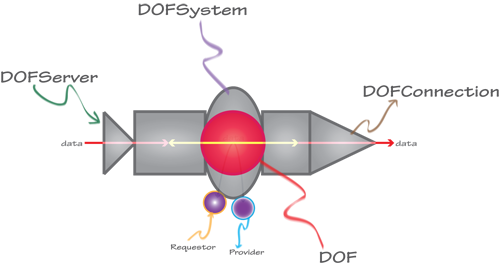
Looking for Source Code?
Good news, the source code is available here!

Good news, the source code is available here!

“DOF” is an acronym that defines the underlying technology supported by the OpenDOF Project. “Distributed” refers to the way objects and aspects of an object are distributed on a network. “Object” refers to the DOF Object Model, which ensures greater security and flexibility. And “Framework” refers to the fact that this is a complete solution that can be integrated into your application. To put it another way, DOF technology allows many different products, using many different standards, to more easily share information across many different networks. So whether you are networking a simple or complex system of embedded devices using local servers or taking advantage of advanced cloud technology, the OpenDOF Project can provide the solutions you need to enhance nearly any product, from the simplest resource-constrained devices to the most powerful computer networks.

If you’re looking for more information about designing interfaces, the Object Model, DOF Operations, DOF Connectivity, or DOF Security, we have you covered! The Guides are available for download.
Click the Downloads link and start reading!

The Permission Type Registry
Permission Types are grouped into the Permission Type Registry with each Permission Type allowing for extendable methods of identifying permissions.
When an operation is initiated, binding permissions at each DOF component determines whether the operation is allowed to be transmitted through that component. Binding permissions are permission type 1 in the Permission Type Registry. A binding permission consists of four parts that determine what the permission allows:
actions
object identifiers
interface identifiers
attributes

Some useful API tips
The API uses a number of common conventions in naming:
Anything called a “listener” is an interface that can be implemented to listen for specific types of operations and perform callback functionality. Requestor listener interfaces are usually called “operation listener,” so if the name of the interface doesn’t include the word “operation,” it usually is provider functionality.

An Object Access Library (OAL) written in a specific programming language that is used to access data which meets the standards of DOF technology.